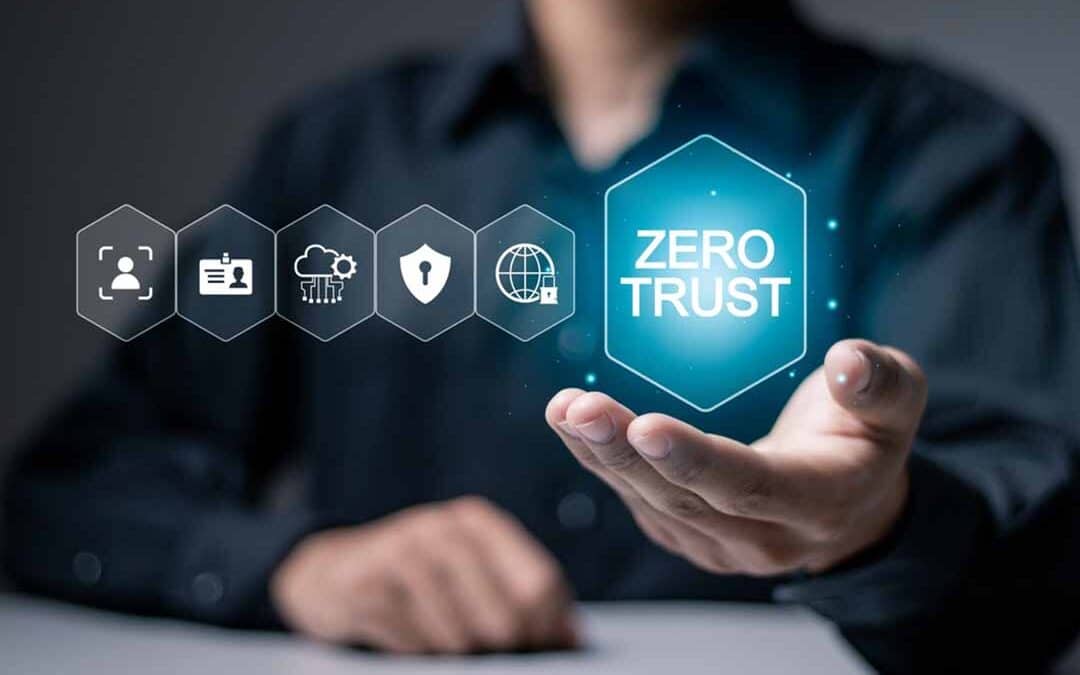Zero trust security has emerged as a game-changing cybersecurity strategy for businesses that recognize the growing complexity of modern digital environments. With cyber threats increasing in sophistication and frequency, the traditional perimeter-based approach to security is no longer sufficient. Attackers are adept at breaching external defenses, exploiting network vulnerabilities, and compromising trusted systems. To combat this, organizations need a more resilient, adaptable, and comprehensive approach to secure their networks and data. This is where the zero trust security model comes into play. It fundamentally changes how businesses manage access to their systems, ensuring that nothing is inherently trusted—whether inside or outside the network.
What is the Zero Trust Security Model?
The zero trust security model is based on a simple but powerful principle: “Never trust, always verify.” Zero trust assumes that both internal and external environments are potentially hostile. This means no device, user, or system is trusted automatically, even if it’s already inside the network.
At its core, zero trust focuses on protecting resources (data, systems, applications) rather than simply securing the network perimeter. It uses technologies like multi-factor authentication (MFA), identity and access management (IAM), micro-segmentation, and real-time monitoring to enforce security policies. Every request to access data or systems is subject to verification, regardless of where the request originates. By continuously validating user identities and their access rights, zero trust provides a much stronger defense against unauthorized access and cyberattacks.
Why is Zero Trust So Important?
The importance of zero trust lies in its ability to address modern cybersecurity challenges more effectively than traditional methods. Here are a few key reasons why businesses should prioritize adopting zero trust:
Growing Cyber Threat Landscape: Cybercriminals use advanced techniques to infiltrate networks. Phishing attacks, malware, ransomware, and insider threats make it nearly impossible for perimeter defenses to detect every potential risk.
Increased Workforce Mobility: With the rise of remote work and hybrid models, employees are accessing corporate systems from various locations and devices. Zero Trust ensures that access is secure, regardless of where the user is located or their device.
Cloud-Based Applications and Services: Many organizations now rely on cloud services, which distribute data and applications across multiple locations. Zero trust ensures that cloud assets are protected through stringent access controls, regardless of physical location.
Regulatory Compliance: Adopting a zero trust model can help businesses meet regulatory requirements by enforcing stricter access controls and data protection policies.
By assuming every interaction with the network could be a potential threat, zero trust minimizes the damage from breaches and ensures tighter control over access to critical resources.
5 Core Principles of the Zero Trust Model
Verify Identity and Device Continuously
Every user and device must authenticate when they attempt to access a resource. This involves continuous validation using techniques such as multi-factor authentication (MFA) and device posture checks to ensure that only authorized personnel can access sensitive data or systems.
Least Privilege Access
Users and systems should only have the minimum access required to perform their tasks. This means limiting permissions and ensuring that even trusted users can only interact with specific data or applications necessary for their role, reducing the attack surface.
Micro-Segmentation
Zero trust advocates for breaking the network into smaller, isolated segments. Each segment has its own access controls, so if one segment is breached, it doesn’t compromise the entire network. This helps contain potential threats and limits lateral movement within the network.
Monitor and Log All Activity
Continuous monitoring is essential to zero trust. All user activities, including access requests and interactions with data, are logged and analyzed to identify suspicious behaviors. Real-time analytics and automated responses ensure that potential threats are caught quickly.
Automation and Orchestration
Given the complexity of today’s cybersecurity landscape, automation plays a critical role in zero trust. Automated systems help enforce security policies consistently and react to threats in real time. Orchestration platforms ensure that security actions are seamlessly coordinated across different tools and technologies.
5 Benefits of Zero Trust Security Solutions
Improved Data Protection
By enforcing strict access controls and verifying identities continuously, zero trust ensures that sensitive data is protected from unauthorized access, both from external attackers and insider threats.
Enhanced Network Visibility
Zero trust provides organizations with a clearer view of who is accessing which resources and when. This enhanced visibility helps identify potential security gaps and enables quicker responses to suspicious activities.
Reduced Risk of Breaches
Zero trust minimizes the damage caused by cyberattacks by containing the spread of breaches within isolated segments. Even if a breach occurs, the attack cannot move laterally across the network, limiting its impact.
Better Compliance and Governance
Zero trust helps organizations comply with industry regulations and maintain strong governance over their data and network operations by implementing robust access control and monitoring mechanisms.
Simplified Security Architecture
With zero trust, organizations can move from complex and outdated perimeter-based security models to a more streamlined approach. This makes managing security infrastructure easier and more efficient while improving protection.
Implement a Zero Trust Security Strategy with Cynergy Technology!
Cynergy Technology is committed to helping organizations enhance their cybersecurity posture by implementing zero trust security solutions. As a leading provider of network security services, Cynergy offers tailored solutions that address the unique needs of your business, whether you operate on-premise, in the cloud, or in a hybrid environment. Cynergy’s comprehensive suite of services includes multi-factor authentication, identity management, micro-segmentation, and advanced threat detection, ensuring that your network and data are protected from every angle.
Ready to secure your business with a zero trust strategy? Schedule your free consultation with Cynergy today and discover how we can help you fortify your cybersecurity defenses.







